Oregon's Climate Advantage: Why the Pacific Northwest Produces Superior THCA Flower
The Pacific Northwest has long been recognized as an agricultural powerhouse, producing everything from world-class wine grapes to premium coffee beans. Now, this same region is establishing itself as the premier destination for cultivating exceptional THCA flower. Oregon, in particular, stands out as a leader in hemp cultivation, where the unique convergence of climate, soil, and geography creates optimal conditions for producing some of the finest oregon thca flower available in today's market.
At Oregon Hemp Flower Farm, cultivators have harnessed these natural advantages to develop cultivation techniques that maximize the potential of pacific northwest hemp. The result is oregon grown thca that consistently exceeds industry standards for potency, flavor, and overall quality. Understanding why Oregon produces such superior THCA flower requires examining the intricate relationship between environmental factors and hemp cultivation, revealing how nature and nurture combine to create truly exceptional cannabis products.
The Perfect Storm: Oregon's Unique Climate Profile
Oregon's climate represents a goldilocks zone for hemp cultivation – not too hot, not too cold, but just right for optimal THCA development. The oregon climate hemp advantage begins with the state's Mediterranean-like weather patterns, characterized by warm, dry summers and mild, wet winters. This climate profile creates extended growing seasons that allow THCA plants to develop slowly and thoroughly, resulting in more complex cannabinoid and terpene profiles.
The state's position between the Pacific Ocean and the Cascade Mountains creates a natural buffer system that moderates temperature extremes. Coastal influences bring cool, moist air inland, while the mountains provide protection from harsh continental weather patterns. This geographic positioning ensures that oregon thca flower cultivation benefits from consistent temperatures that rarely fluctuate beyond the optimal range for hemp growth.
During the crucial flowering period, Oregon's summer temperatures typically range between 70-85°F during the day, dropping to comfortable 50-60°F at night. These temperature differentials are critical for THCA development, as cooler nighttime temperatures help preserve volatile terpenes while allowing cannabinoids to concentrate during the day. The consistent temperature patterns eliminate the stress that extreme heat or cold can place on plants, resulting in healthier, more robust hemp flowers.
Humidity levels throughout Oregon's growing regions naturally fall within the ideal range for hemp cultivation. The state's proximity to the Pacific Ocean ensures adequate moisture levels during the vegetative growth phase, while the dry summer months provide the low humidity conditions necessary for proper flower development and curing. This natural humidity regulation reduces the risk of mold and mildew while promoting optimal resin production.
Willamette Valley: The Crown Jewel of Hemp Cultivation
The Willamette Valley thca region represents the pinnacle of Oregon's hemp growing potential. Stretching from Portland to Eugene, this fertile valley has earned recognition as one of the world's premier agricultural regions, and hemp cultivation here benefits from the same conditions that make it ideal for wine grapes and specialty crops.
The Willamette Valley's unique microclimate results from its position between the Coast Range and the Cascade Mountains. This geographic bowl effect creates a protected environment where temperatures remain moderate throughout the growing season. The valley floor's elevation, typically between 200-400 feet above sea level, provides optimal atmospheric pressure and air circulation patterns that promote healthy plant growth.
Precipitation patterns in the Willamette Valley follow an ideal schedule for hemp cultivation. The region receives most of its annual rainfall during the winter months, creating perfect conditions for soil preparation and early spring planting. As summer approaches, rainfall decreases dramatically, providing the dry conditions necessary for flower development and harvest. This natural irrigation schedule reduces the need for artificial watering systems while ensuring plants receive adequate moisture when needed most.
The valley's soil composition represents millions of years of geological activity, combining volcanic ash deposits with alluvial sediments carried down from surrounding mountains. This unique soil matrix provides exceptional drainage while retaining essential nutrients and minerals. The result is willamette valley thca flower that exhibits complex terpene profiles and robust cannabinoid content that reflects the rich terroir of the region.
Volcanic Soil: Nature's Perfect Growing Medium
Oregon's volcanic soil foundation provides one of the most significant advantages for oregon soil thca cultivation. The state's position along the Pacific Ring of Fire has resulted in repeated volcanic activity over millions of years, creating soil compositions that are exceptionally well-suited for hemp cultivation.
Volcanic soils are naturally rich in essential minerals including potassium, phosphorus, magnesium, and trace elements that hemp plants require for optimal growth. These nutrients are present in forms that are easily absorbed by plant roots, eliminating the need for heavy fertilization while promoting natural, organic growth patterns. The mineral content of volcanic soils contributes directly to the development of complex terpene profiles and enhanced cannabinoid production.
The porosity of volcanic soil creates ideal drainage conditions that prevent root rot while allowing proper aeration. Hemp plants require well-draining soil to prevent waterlogged conditions that can stunt growth or promote disease. Oregon's volcanic soils naturally provide these drainage characteristics while maintaining enough moisture retention to support consistent growth throughout the growing season.
pH levels in Oregon's volcanic soils typically fall within the optimal range for hemp cultivation, usually between 6.0 and 7.0. This slightly acidic to neutral pH allows for maximum nutrient uptake while supporting beneficial soil microorganisms that contribute to plant health. The natural pH buffering capacity of volcanic soils helps maintain stable growing conditions throughout the season.
The trace mineral content of volcanic soils includes elements like silicon, sulfur, and boron that contribute to plant structure and resin production. These micronutrients play crucial roles in terpene synthesis and cannabinoid development, resulting in oregon thca flower with enhanced potency and more complex aromatic profiles.
Oregon Hemp Farms: Innovation Meets Tradition
Oregon hemp farms represent a unique blend of traditional agricultural knowledge and cutting-edge cultivation techniques. Many of these operations are family-owned businesses that have transitioned from other agricultural pursuits, bringing decades of farming experience to hemp cultivation. This combination of agricultural heritage and innovative approaches has positioned Oregon as a leader in premium hemp production.
The scale and diversity of Oregon hemp farms allow for experimentation with different cultivation methods and genetic varieties. From small-scale artisanal operations focusing on specific cultivars to larger commercial farms implementing advanced agricultural technologies, Oregon's hemp industry encompasses the full spectrum of cultivation approaches. This diversity has accelerated the development of best practices and cultivation techniques that maximize the potential of oregon grown thca.
Sustainable farming practices are deeply ingrained in Oregon's agricultural culture, and hemp farms throughout the state prioritize environmental stewardship. Many operations utilize organic growing methods, renewable energy sources, and water conservation techniques that minimize environmental impact while producing premium-quality flower. These sustainable practices not only benefit the environment but also contribute to the overall quality and purity of the final product.
Oregon hemp farms benefit from the state's robust agricultural infrastructure, including access to specialized equipment, processing facilities, and distribution networks. The existing agricultural support system has seamlessly adapted to serve the hemp industry, providing farmers with the resources needed to optimize their operations and bring premium products to market efficiently.
Indoor vs. Outdoor: Oregon's Advantage Across All Cultivation Methods
Oregon's climate advantages extend across all cultivation methods, from outdoor thca flower to premium indoor thca production. Each approach leverages different aspects of the state's natural advantages while addressing specific market demands and cultivation goals.
Outdoor thca flower cultivation in Oregon benefits directly from the state's natural climate advantages. The long, stable growing season allows plants to reach full maturity while developing complex cannabinoid and terpene profiles. Outdoor cultivation also allows plants to benefit from natural light spectrums and environmental stresses that can enhance resin production and overall plant vigor.
Oregon's outdoor growing season typically extends from May through October, providing ample time for plants to complete full growth cycles. The gradual transition from long summer days to shorter fall periods naturally triggers flowering responses without the need for artificial light manipulation. This natural photoperiod progression results in more robust flowering and higher yields compared to regions with shorter or less predictable growing seasons.
Indoor thca flower cultivation in Oregon benefits from the state's moderate climate conditions that reduce energy costs and environmental control challenges. The mild temperatures mean less energy is required for heating and cooling grow facilities, while stable outdoor conditions reduce the risk of environmental fluctuations affecting indoor operations.
Oregon's indoor cultivation facilities often incorporate hybrid approaches that take advantage of natural climate conditions. Many operations use light deprivation techniques or greenhouse structures that combine natural sunlight with environmental controls, optimizing growing conditions while reducing energy consumption.
Greenhouse thca flower production represents a middle ground that maximizes Oregon's climate advantages while providing environmental control when needed. Greenhouse cultivation allows growers to extend the growing season, protect plants from adverse weather, and optimize growing conditions while still benefiting from natural sunlight and temperature patterns.
The efficiency of greenhouse operations in Oregon is enhanced by the state's moderate climate, which reduces the need for extensive heating and cooling systems. Natural ventilation can often maintain optimal growing conditions, while the protected environment allows for more precise control over humidity and air circulation.
Terroir: The Oregon Hemp Difference
The concept of oregon terroir hemp extends beyond simple growing conditions to encompass the complete environmental signature that influences hemp development. Like wine grapes, hemp plants express the characteristics of their growing environment in their final product, and Oregon's unique terroir creates distinctive flavor profiles and effects that set oregon thca flower apart from hemp grown in other regions.
Oregon's terroir includes not only climate and soil factors but also altitude, aspect, and microclimate variations that create subtle differences in hemp expression. The interplay between these environmental factors results in hemp varieties that exhibit unique terpene profiles and cannabinoid ratios that reflect their specific growing locations.
The Cascade Mountains contribute significantly to Oregon's hemp terroir through their influence on air circulation patterns, precipitation, and temperature gradients. Cascade mountain hemp cultivation benefits from the unique microenvironments created by elevation changes, aspect variations, and the rain shadow effects of mountain ranges.
Different elevations within Oregon's hemp-growing regions create opportunities for cultivating varieties that thrive under specific conditions. Higher elevation sites often produce hemp with more intense terpene profiles due to increased UV exposure and temperature fluctuations, while lower elevation sites may favor maximum biomass production and yield optimization.
The diversity of Oregon's hemp terroir allows cultivators to match specific varieties with optimal growing locations, maximizing the expression of desirable characteristics. This terroir-driven approach to cultivation results in a range of oregon thca flower products that offer distinct experiences and effects based on their growing location and environmental influences.
THCA Flower Cultivation: Maximizing Oregon's Advantages
THCA flower cultivation in Oregon has evolved to take full advantage of the state's natural benefits while incorporating advanced agricultural techniques. Understanding how to optimize growing conditions for THCA production requires balancing environmental factors with cultivation practices that maximize cannabinoid development and preserve terpene profiles.
The timing of cultivation activities in Oregon is carefully coordinated with natural environmental cycles. Planting schedules are optimized to take advantage of the state's reliable weather patterns, while harvest timing is determined by monitoring both plant development and environmental conditions. This coordination ensures that plants reach peak maturity under optimal conditions.
Nutrient management in Oregon hemp cultivation focuses on enhancing the natural advantages provided by volcanic soils. Supplemental feeding programs are designed to complement existing soil nutrients rather than replace them, resulting in more balanced plant nutrition and enhanced final product quality. Organic amendments and beneficial microorganisms are often incorporated to support soil health and plant vigor.
Water management strategies in Oregon leverage the state's natural precipitation patterns while providing supplemental irrigation when needed. Efficient irrigation systems help maintain optimal soil moisture levels during dry periods while preventing overwatering that could dilute cannabinoid concentrations or promote disease development.
Integrated pest management approaches in Oregon take advantage of the state's natural ecological balance to minimize pest pressure while avoiding chemical interventions that could affect final product quality. Beneficial insects, companion planting, and environmental modifications are used to create growing conditions that naturally deter pests while supporting plant health.
The Science Behind Superior THCA Production
The superior quality of oregon thca flower results from the complex interaction between environmental factors and plant biochemistry. Understanding the scientific principles behind THCA production helps explain why Oregon's unique conditions produce consistently exceptional results.
THCA (tetrahydrocannabinolic acid) is the precursor to THC and is produced through a series of enzymatic reactions within hemp flowers. These biochemical processes are highly sensitive to environmental conditions, particularly temperature, humidity, light exposure, and nutrient availability. Oregon's climate provides optimal conditions for these enzymatic processes to occur efficiently and consistently.
Temperature regulation plays a crucial role in THCA synthesis and preservation. The moderate temperatures characteristic of Oregon's growing regions provide optimal conditions for enzyme activity while preventing the degradation that can occur under extreme heat. Nighttime temperature drops help preserve volatile compounds while allowing continued cannabinoid production during daylight hours.
Light quality and duration in Oregon provide ideal conditions for photosynthesis and secondary metabolite production. The state's latitude provides long summer days with intense but not excessive light levels, while the natural progression to shorter days triggers appropriate flowering responses. UV exposure levels in Oregon are sufficient to stimulate resin production without causing plant stress or damage.
Soil chemistry interactions in Oregon's volcanic soils support optimal nutrient uptake and secondary metabolite production. The mineral profile of these soils provides essential cofactors for enzymatic processes involved in cannabinoid and terpene synthesis. Trace elements present in volcanic soils contribute to the development of complex chemical profiles that enhance both potency and flavor.
Quality Assurance and Testing Standards
Oregon's commitment to quality extends beyond cultivation to include comprehensive testing and quality assurance programs that ensure oregon thca flower meets the highest standards for purity, potency, and safety. The state's regulatory framework requires extensive testing throughout the production process, providing consumers with confidence in product quality and consistency.
Cannabinoid profiling of Oregon THCA flower typically reveals complex profiles with high THCA concentrations and beneficial minor cannabinoids. The state's growing conditions promote the development of diverse cannabinoid profiles that provide enhanced therapeutic potential and more nuanced effects compared to simpler cannabinoid profiles.
Terpene analysis of oregon grown thca consistently shows rich, complex terpene profiles that reflect the state's unique terroir. The preservation of volatile terpenes through careful cultivation and processing techniques results in products with enhanced flavor, aroma, and entourage effects that contribute to overall quality and user experience.
Contaminant testing ensures that Oregon THCA flower is free from pesticides, heavy metals, microbials, and other potentially harmful substances. The state's clean environment and emphasis on sustainable growing practices contribute to naturally clean products that easily meet or exceed safety standards.
Moisture content and water activity testing ensure proper curing and storage conditions that preserve product quality and prevent degradation. Oregon's climate advantages extend to post-harvest processing, where natural humidity conditions support optimal curing processes that enhance flavor and potency while preventing mold or other quality issues.
Market Leadership and Future Prospects
Oregon's position as a leader in premium indoor thca and outdoor cultivation continues to strengthen as the hemp industry evolves. The state's natural advantages, combined with continued innovation in cultivation techniques and processing methods, position Oregon hemp farms to maintain their competitive edge in the expanding THCA flower market.
Research and development initiatives throughout Oregon's hemp industry continue to advance cultivation techniques and product development. University partnerships, industry collaborations, and private research efforts are working to optimize growing conditions, develop new varieties, and improve processing methods that further enhance product quality.
Sustainability initiatives within Oregon's hemp industry align with consumer preferences for environmentally responsible products. The state's emphasis on sustainable agriculture, renewable energy, and environmental stewardship resonates with conscious consumers and positions Oregon hemp products favorably in competitive markets.
Quality recognition and industry awards for oregon thca flower continue to validate the state's reputation for superior hemp production. Industry competitions, consumer reviews, and third-party quality assessments consistently recognize Oregon-grown hemp for exceptional quality, potency, and overall excellence.
Conclusion: Oregon's Unmatched Hemp Heritage
The superior quality of oregon thca flower results from a unique combination of natural advantages and cultivation expertise that cannot be easily replicated in other regions. Oregon's Mediterranean climate, volcanic soils, diverse terroir, and commitment to sustainable agriculture create optimal conditions for producing hemp that consistently exceeds industry standards for quality, potency, and overall excellence.
From the Willamette Valley thca cultivation areas to cascade mountain hemp operations, Oregon's diverse growing regions provide opportunities for producing hemp varieties that showcase the full potential of this remarkable plant. Whether cultivated using outdoor thca flower, indoor thca flower, or greenhouse thca flower methods, Oregon-grown hemp benefits from environmental advantages that enhance every aspect of plant development and final product quality.
The expertise and innovation of oregon hemp farms continue to push the boundaries of what's possible in hemp cultivation, combining traditional agricultural knowledge with cutting-edge techniques to maximize the potential of the state's natural advantages. This commitment to excellence ensures that oregon grown thca will continue to set industry standards for quality and innovation.
As the hemp industry continues to evolve, Oregon's position as a leader in thca flower cultivation is supported by natural advantages that cannot be artificially created or easily replicated. The state's unique climate, exceptional soils, and commitment to sustainable agriculture provide a foundation for continued leadership in producing the world's finest THCA flower.
For consumers seeking the highest quality THCA flower, Oregon's climate advantage makes it the clear choice for superior hemp products. Whether you're looking for complex terpene profiles, maximum potency, or simply the cleanest, most natural hemp experience possible, oregon thca flower represents the pinnacle of what modern hemp cultivation can achieve. Experience the Oregon difference at Oregon Hemp Flower Farm, where nature's advantages meet cultivation excellence to produce truly exceptional THCA flower.

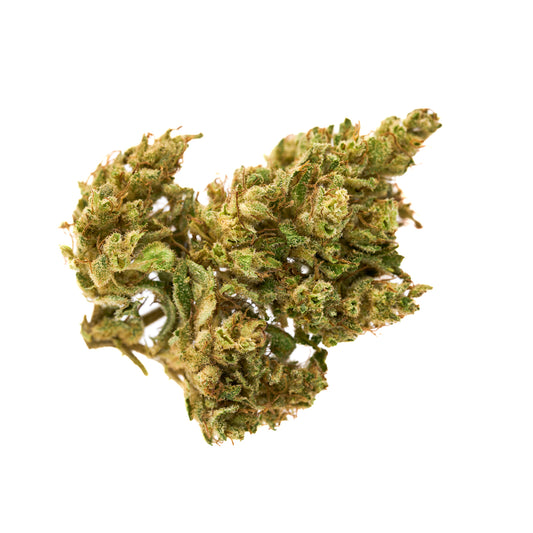
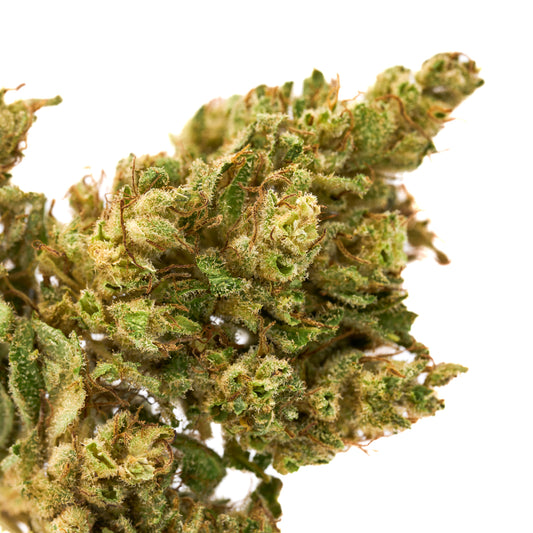
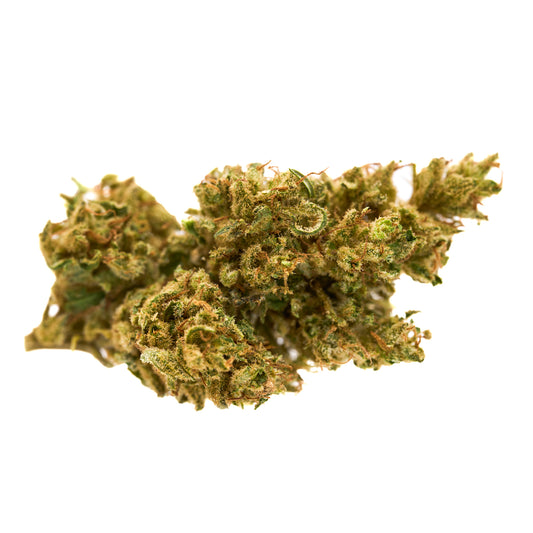
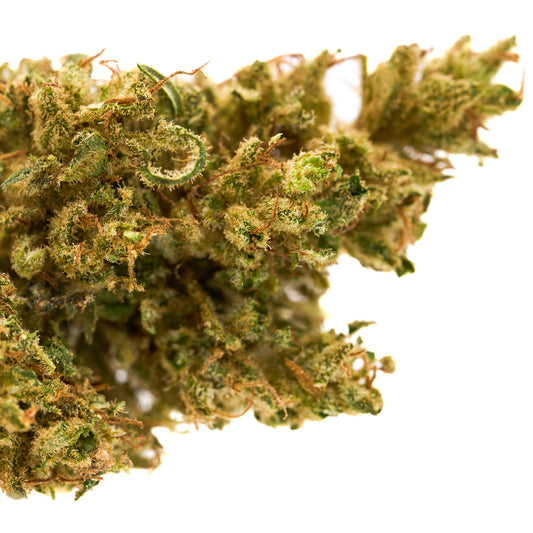
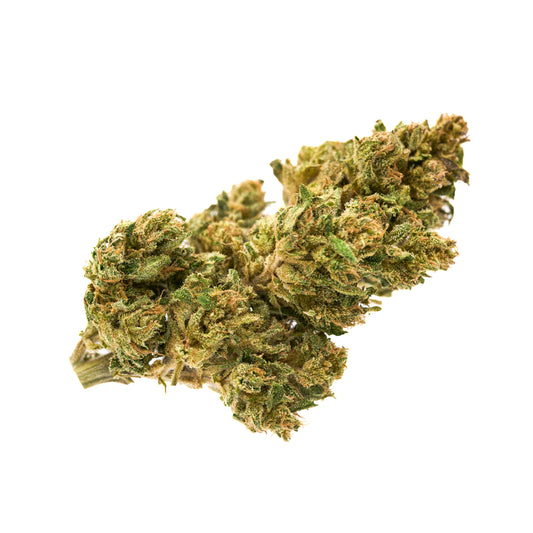
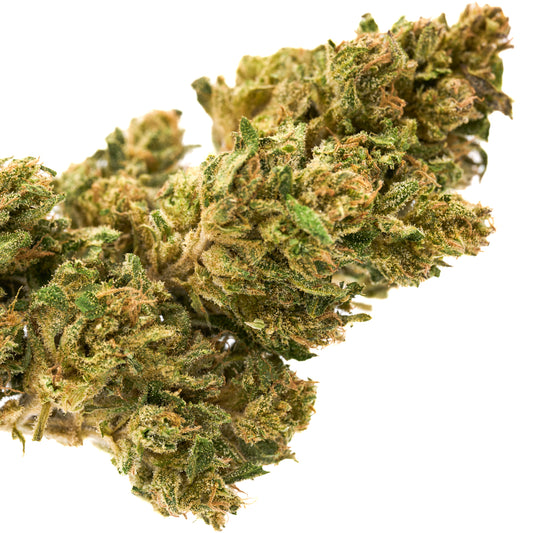



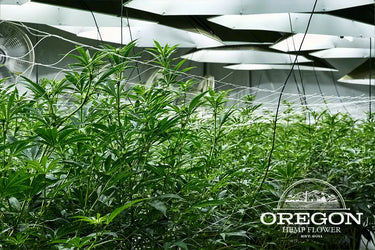

Leave a comment
Please note, comments need to be approved before they are published.